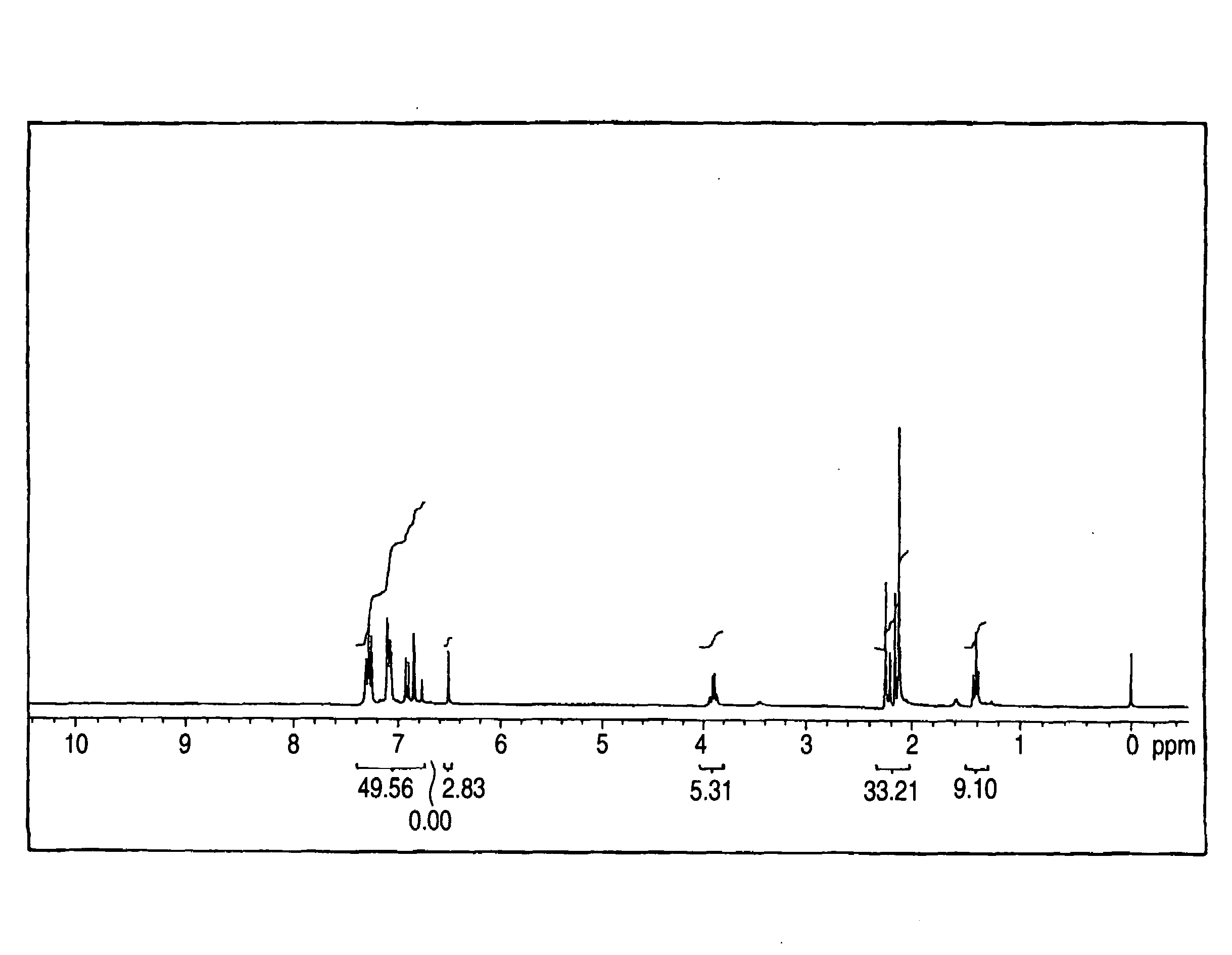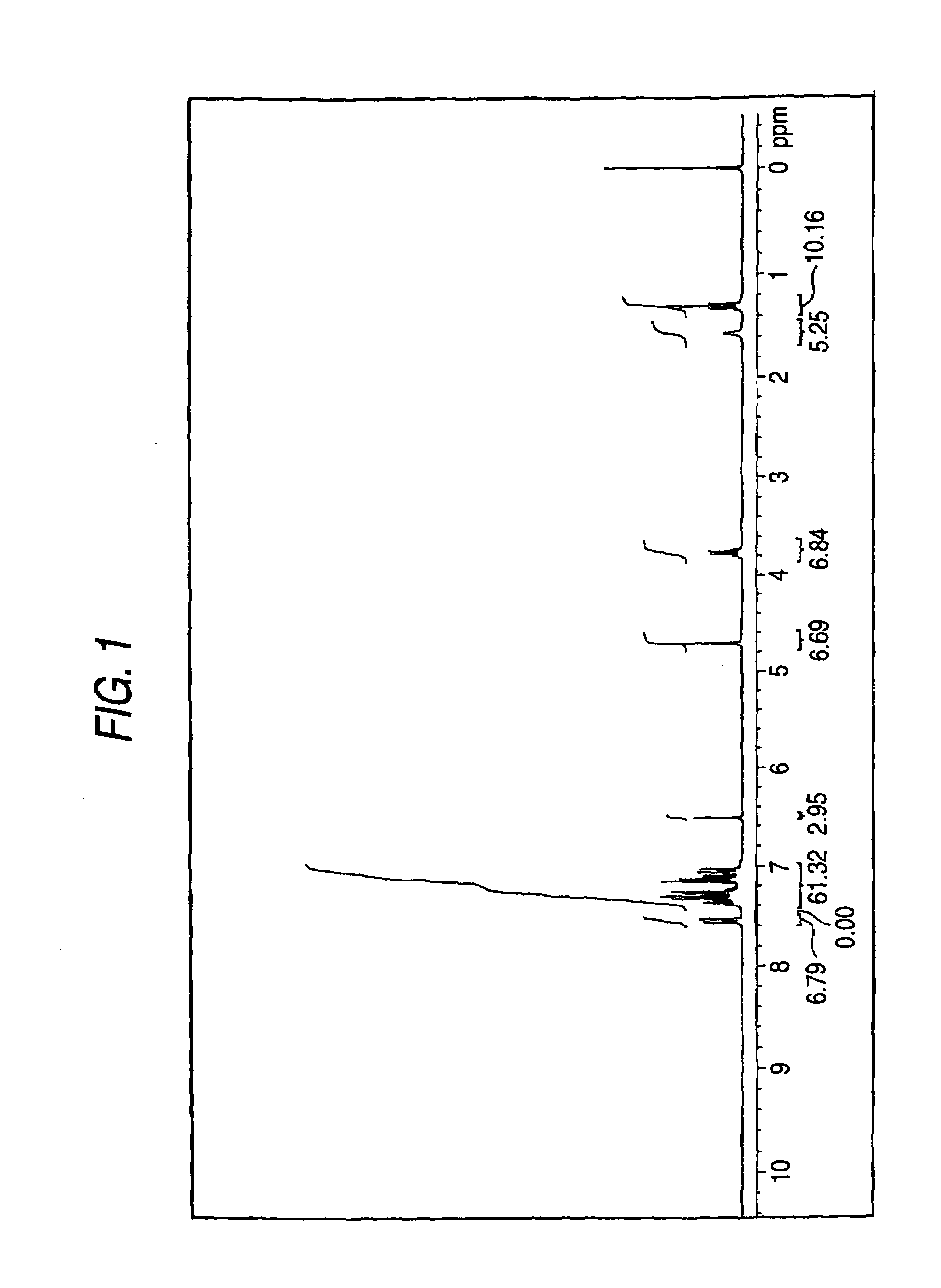Photosensitive composition and novel compound used therefor
- Summary
- Abstract
- Description
- Claims
- Application Information
AI Technical Summary
Benefits of technology
Problems solved by technology
Method used
Image
Examples
examples
[0477]The invention will be described below with reference to the following Examples, but it should not be construed that the invention is limited thereto.
synthesis examples 1 to 4
Synthesis Example 1
Synthesis of Illustrative Compound D3
[0478]In 450 mL of methanol, 27 g of diphenylaminobenzaldehyde and 3.5 g of piperidine were dissolved, and the solution was stirred for one hour while refluxing. Next, 17 g of 3-ethyl-2-allylimino-oxazolidin-4-one was added, and the mixture was stirred for one hour while refluxing. After completion of the reaction, the reaction mixture was allowed to stand for cooling to room temperature, whereby a yellow crystal was deposited. The deposited crystal was filtered and added to 1,000 mL of methanol, and the mixture was stirred for one hour. The resulting crystal was filtered and dried to obtain 23 g of the following illustrative compound (D3) (yield: 55%). The compound was identified by means of 1H-NMR (solvent: CDCl3), infrared absorption spectrum, mass analysis spectrum, and elemental analysis. Melting point: 67° C., electron absorption spectrum (THF): absorption maximum wavelength: 388 nm, absorption maximum molar absorption co...
synthesis example 2
Synthesis of Illustrative Compound D3
[0480]In 500 mL of methanol, 35 g of diphenylaminobenzaldehyde and 2.0 g of piperidine were dissolved, and the solution was stirred for one hour while refluxing. Next, 20 g of 3-ethyl-2-thioxo-4-oxazolinedione was added thereto, and the mixture was stirred for 4 hours while refluxing. After completion of the reaction, the reaction mixture was allowed to stand for cooling to room temperature, whereby a yellow crystal was deposited. The deposited crystal was filtered and added to 1,000 mL of methanol, and the mixture was stirred for one hour. The resulting crystal was filtered and dried to obtain 48 g of the following compound (D3′) as a dye precursor (yield: 91%). The compound was identified by means of 1H-NMR.
[0481]
[0482]Next, 1.7 g of silver nitrate was dissolved in 20 ml of acetonitrile, to which was then added 2.0 g of the foregoing compound (D3′) as a dye precursor, and the mixture was stirred at room temperature for 0.5 hours. Next, 1.0 g of...
PUM
 Login to View More
Login to View More Abstract
Description
Claims
Application Information
 Login to View More
Login to View More - R&D
- Intellectual Property
- Life Sciences
- Materials
- Tech Scout
- Unparalleled Data Quality
- Higher Quality Content
- 60% Fewer Hallucinations
Browse by: Latest US Patents, China's latest patents, Technical Efficacy Thesaurus, Application Domain, Technology Topic, Popular Technical Reports.
© 2025 PatSnap. All rights reserved.Legal|Privacy policy|Modern Slavery Act Transparency Statement|Sitemap|About US| Contact US: help@patsnap.com



